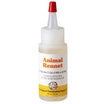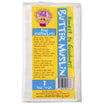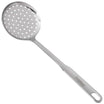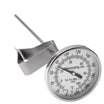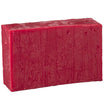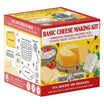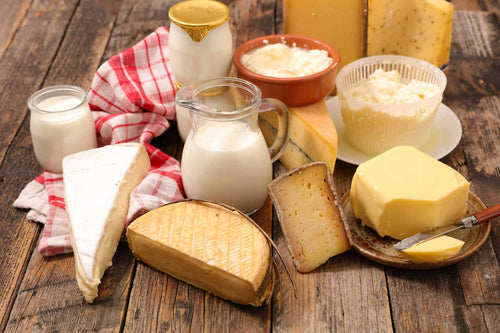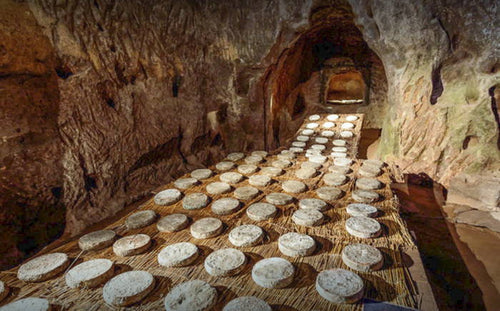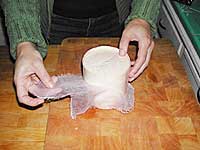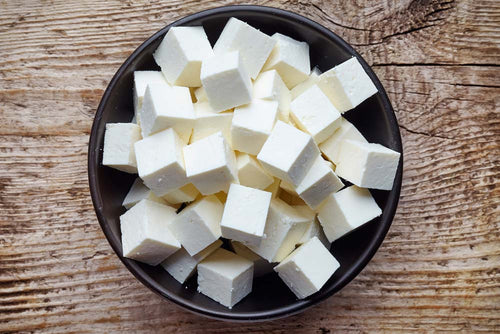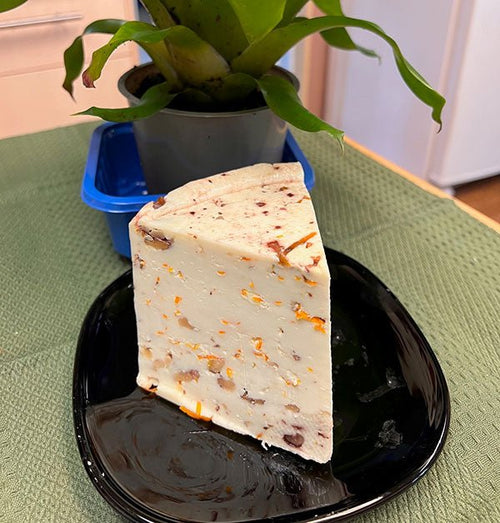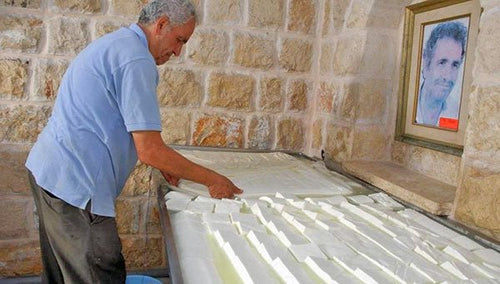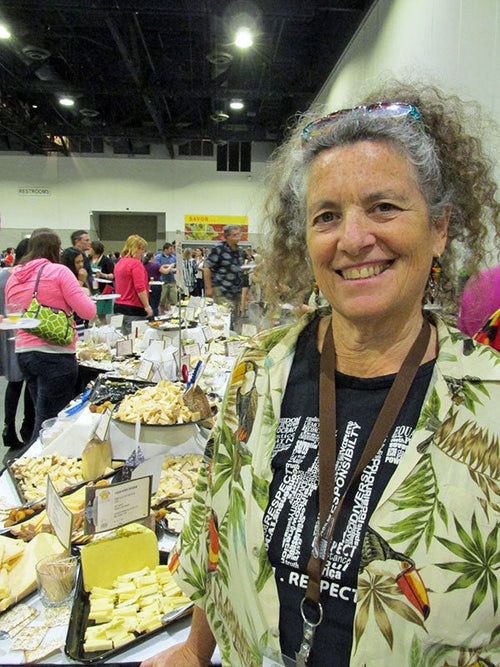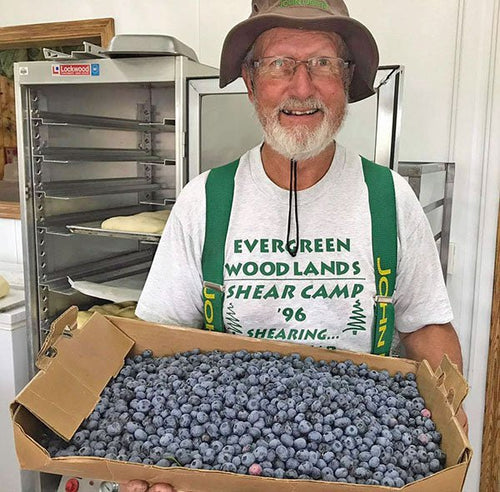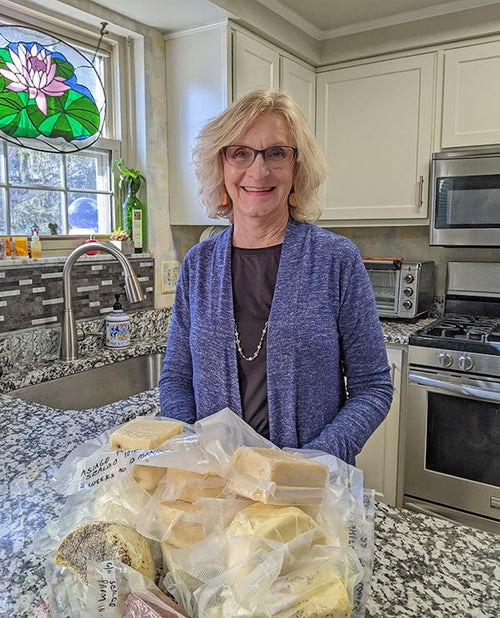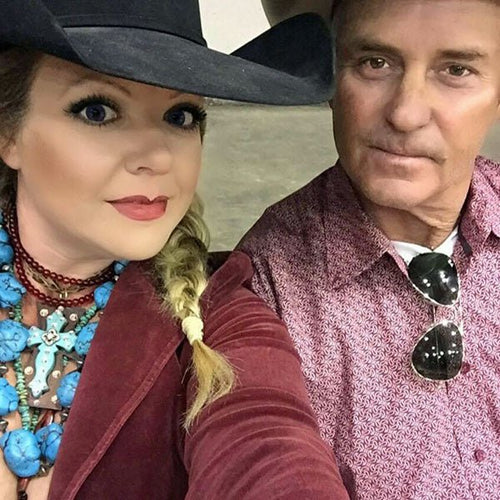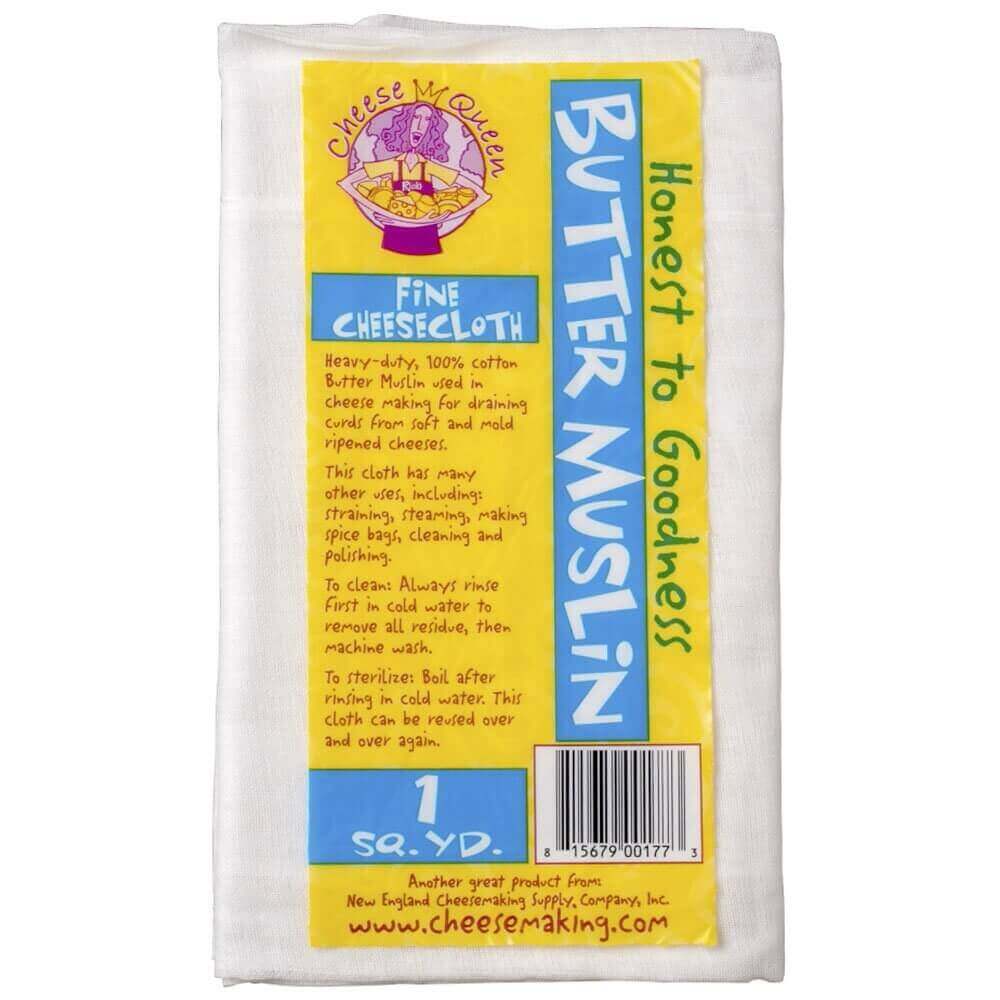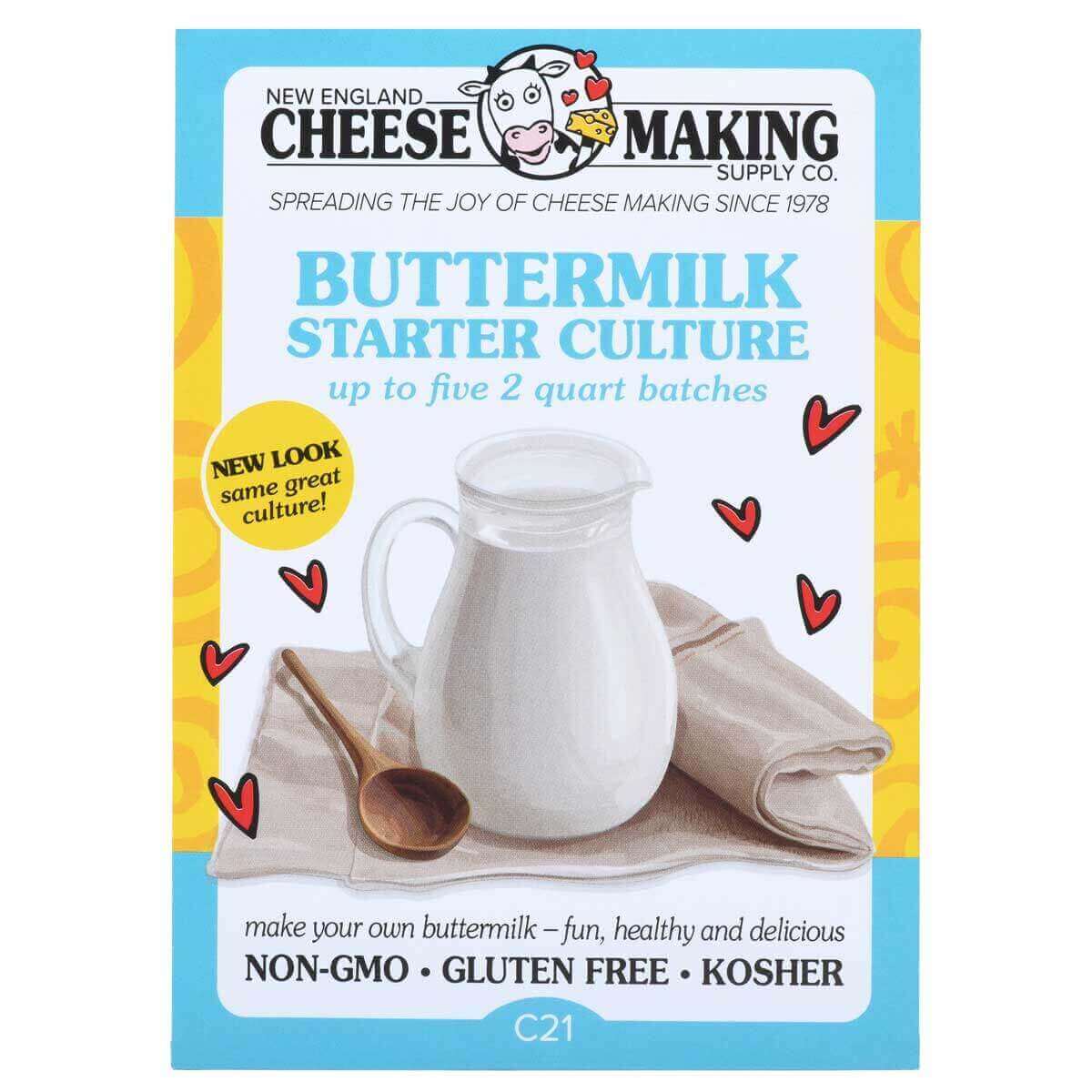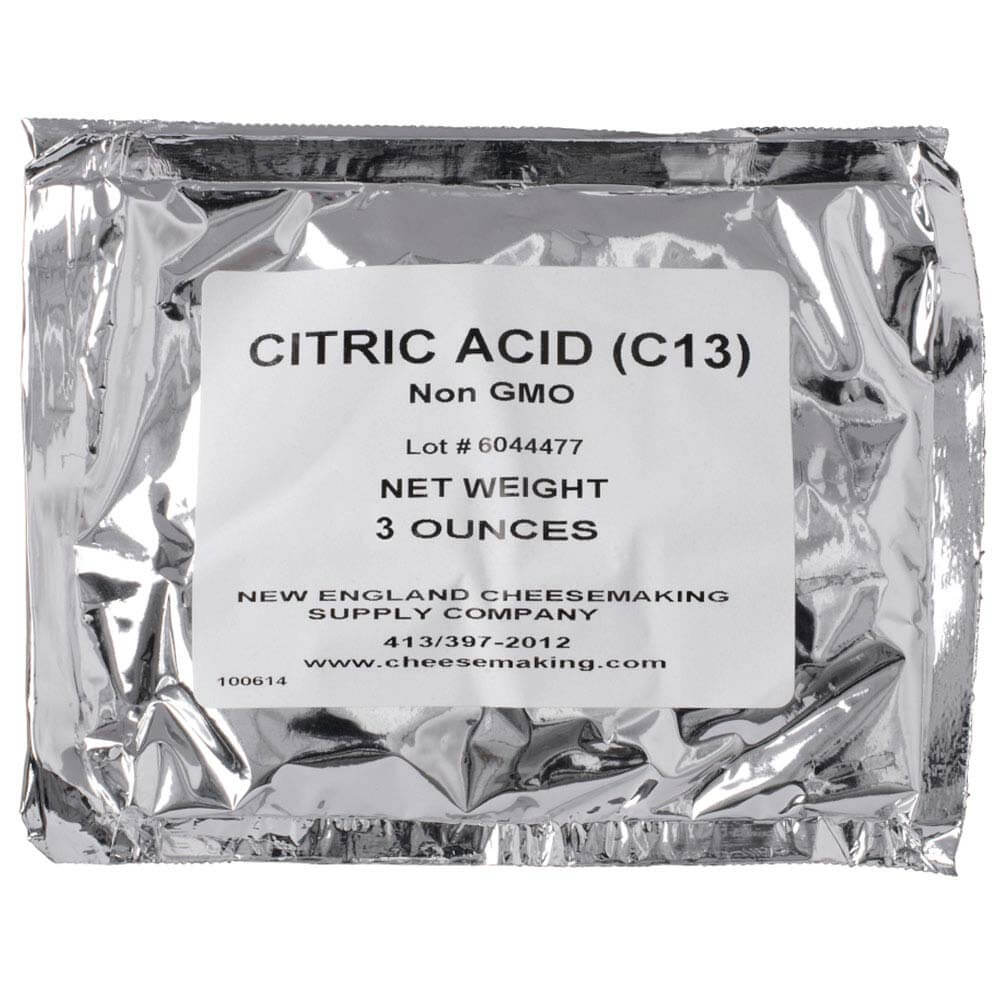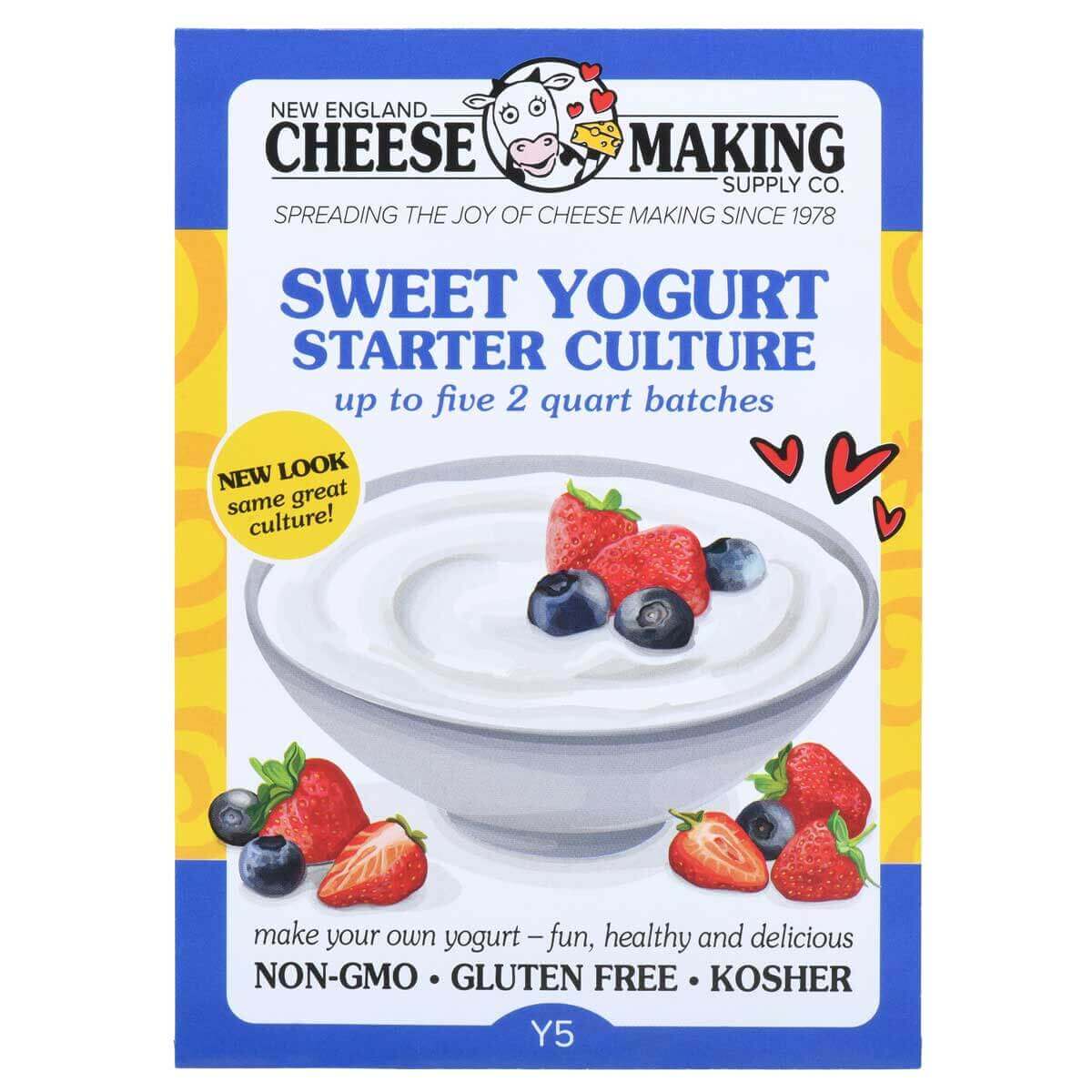Cheese Making Recipe of the Month
Robiola
It doesn't get any easier!
Jim loves this cheese because it's simple and it can be made a variety of ways. You can use cow, goat or ewe milk or a combination of them all. You may also use store-bought pasteurized milk. You can even make it with almost any culture.
There is only one absolute requirement- you must use whole milk. (Jim feels very strongly about this, so if you will be using lowfat milk, you do so at your own risk! You will have to hang your head in shame when your cheese tastes yucky and then you probably won't have the courage to ask Jim any questions about it. You have been warned!)
Robiola comes from Northern Italy. There are many variations on the market. One of the main differences is in the ripening time. After 4 days, it may be eaten fresh and after 30-40 days, it will be mature (like the one shown at left).
Jim makes his Robiola in basket molds. In the picture above, he has just drained the cheese for 12-18 hours and it is ready to be brined for an hour. Then it will be ripened for as long as Jim can wait (the hardest part!).
Cheese Making Questions & Answers
This month we focus on drying cheesecloth in high humidity
There were a lot of great answers to Janie Zencak's question about how to dry cheesecloth in humid climates. Several came from cheesemakers in other humid countries:
We have similar issues regarding humidity in the rainy season here in mainland Mexico. I boil my cheesecloth and then hang it in the sun for the day, afterward I store it lightly folded in a Tupperware drawer. The drawer is not airtight as that would create dampness and mildew just covered to keep the dust off, another problem we share with Namibia. the traditional cheese makers here keep their cheese on wooden racks suspended from the ceiling covered with a cotton cloth to keep flys off. They don't have refrigeration so they make most of their cheese in the dry season. When I asked how they deal with molds, etc in the rainy season they said they just wipe it off......hmm.
Holly Hunter (shown at right)
I live in Israel and our summers are very hot and with high humidity too (something as 75%).
I think that very hot ironing (as for linen fabrics) may help in this occasion- it dries and disinfects an? cheesecloth at the same time. I mean - to dry the cheesecloth in open air and when it is almost dry- to iron something like 10 min without steaming.
Elena Stroganov
I make cheese in a wet and steamy corner of Jamaica, not quite as humid as Namibia but still....
I suggest reboiling the cloth just before using, hang up to drain a little and then use it wet. The wetness isn't a problem and the unwanted fungus should be removed that way.
BTW, I have to give my bloomy rind cheeses 2 days drying time in a cage hung up on the veranda, covered with mosquito netting to keep out the bugs, with a fan trained on it the whole time! (shown at left)
Joanna Bulova (former student of Ricki's)
I'm an amateur (very amateur) cheesemaker in Zambia. I had the same problem last rainy season! It was so frustrating to produce beautiful curds only to spoil them with yeasty cheesecloth. I finally started drying them in the sun with an electric fan blowing on them. If I don't have access to electricity, I dry the cloth as best as I can. Before I use it I boil it for a few minutes in a pot of water with about ¼ cup white vinegar. I then rinse it out for immediate use. If I know the cheesecloth took a whole day or more to dry: boil cheese cloth for about 10 minutes in plain water, soak about 30 minutes in about 1 quart water + 3TBS bleach, rinse THOROUGHLY, use immediately.
That seems to have fixed my yeast problem. As soon as the weather dries up, I pin up all my cheesecloth in the sun for a good bleach dry-out.
Ashley Keller
My suggestion is to try ironing the cheesecloth. In parts of Kenya, where I live, everything is ironed to kill small nasties like mango fly larvae. These get on clothes when they are drying on the line. I'm sure you would have to experiment, but this could be a way to kill the yeast. I suspect it would need to be under a pressing cloth so it doesn't burn.
Love your newsletters and am enjoying my cheese making adventures! I make yogurt, quark, mozzarella and queso fresco, and ricotta. Have done a little with goat cheese, but my goat is a little stingy!
Sandra Daniels (husband, Charlie at right)
If the cheese cloths were stored in a plastic baggie with one of those silica desiccants, this should solve the problem...and can be obtained in bulk from silicagelpackets.com
Dean Squires
Maybe Janie could pack the damp cheesecloth into a bag with a lot of uncooked rice to desiccate it without exposure to a lot of air. Alternatively, "bake" the cheesecloth at a very low temperature, or maybe even in an oven that has been heated and then turned off.
Another way to dry things faster, though I doubt it would work well in such a rural area, would be to soak the cheesecloth in ethyl alcohol and let it evaporate. The alcohol completely mixes with water and will displace it, then evaporate a lot faster. But securing a supply of potable (non-toxic) alcohol is probably problematic.
Jim Lerner
If electricity is available, one could use a small hair dryer to dry the cheese cloth.
Jacqueline Sequoia
With regard to the cheesecloth not drying quickly enough: would it work use alcohol as a drying agent?
Camille Smith
Regarding the high humidity cheesecloth and wild yeast problem, try soaking the cheesecloth in a high concentration solution of potassium sorbate prior to drying.
Gene Chandle
Not knowing the kitchen, I can only assume that they have an oven. What I would try would be to place the cheese cloth on the racks in the oven. This could be done after using the oven for something else and the oven turned off so there is no additional use of fuel for the stove.
George Fitzgerald
My aunt and uncle lived in Africa for several years and among many interesting pieces of info they shared with me was that you had to iron ALL (underwear included) of your cloths to kill bot fly larva that were laid on wet laundry hung out to dry.
My experience with bread is that yeast can't take high heat either so I suspect the same would work on yeast as well. I would try to let it dry on the line then iron it at max temp to try to sterilize it.
Derek Noel
Did you try baking the cheese cloth in a closed dutch oven? Or, using a food dehydrator? (It needs electricity, but it only costs around $30.
Anne Nelson
My idea would to 'bake' it? I am not sure what kind of ovens she has.....but seems a low heat oven would work to dry it out?
Zachariah English
As someone who lived many years in the ultra-high humidity of the jungles in the Philippines, I have a solution for Janie. (I ran the educational programs in a large UN-sponsored refugee camp.) We found that the only way to get cloth dry is to aim fans on it. (To dry wet clothes, we strung up indoor clotheslines and turned 7 or 8 fans on them.) Janie, try that with your boiled, sterilized cheesecloth. It should dry quickly enough that it isn't contaminated by airborne yeasts.
Ann Wederspahn
Have a cheese making question, we're here for you: info@cheesemaking.com
News From Fellow Cheese Makers
Suzanne has created a new cheese!
Pasta Non-Filata
Suzanne McMinn (Chickens in the Road) lives on a farm in the middle of the Appalachian Mountains at the end of a long dirt road which is frequently washed out and completely impassable. In other words, she doesn't get out much!
Recently, however, Suzanne did get off the farm for a meal at an actual restaurant and she tasted fresh, soft Mozzarella (which she disarmingly refers to as "restaurant cheese").
Now, Suzanne is an inveterate do-it-yourselfer, so she made up her mind to make her own "restaurant cheese," using our 30 Minute Mozzarella recipe. (Previous to this she had been limited to making our Mozzarella as "pizza cheese," because her milk, straight from the cow, goes directly from adding the rennet to stretching across the room!)
Most of us, depending on the milk we are using, can easily make our Mozzarella soft by not handling it as much as usual when stretching it and by keeping the curd from getting too firm. But Suzanne has taken this to a whole new level by not stretching it at all! Of course, technically this is not Mozzarella, but it is McMinnarella!
So, with a drum roll and a bow to the artist, we present Suzanne's new cheese:
The Backyard Goat
When Sarah first ordered this book, it seemed like a stretch for us because we primarily carry books about making cheese. But, there are actually recipes in it for making queso blanco, chevre and soft goat cheese.
Along with these recipes, Sue Weaver tells you everything you will ever need to know about raising goats. She has included thousands of color pictures, millions of cute drawings, and an infinite number of simple charts and inserts to make this book fun and easy to read. Example of an insert:
Nontoxic Fly Repellant for the Milking Stand
It's easy to make a safe, effective fly repellent to spray directly on your goats-and it costs just pennies!
- 1 cup distilled white vinegar
- 1 cup water
- 1/3 cup blue Dawn dish soap
Pour the ingredients into your sprayer, shake and spray! Expect some soap buildup on your goat's coat. To remove it, give her a weekly bath (no additional soap is needed, just rinse her with a bucket or hose).
Please send your cheese making news & photos to: moosletter@cheesemaking.com
Fellow Cheesemaking News
Different sized containers of the same product may be very different, indeed!
Some time ago, I noticed that Kroger sells its own brand of Half-and-Half in a plastic quart, labeled "pasteurized," and in a paper half-gallon, labeled "ultra-pasteurized." I have made lovely Swiss-style cream cheese from the "pasteurized" quart product. Months ago, I called the Kroger product information number and eventually spoke with a nutritionist, who was not aware that the two products were labeled differently.
Eventually (today) I got a return call from a Kroger nutritionist who clarified the situation. The quart size, in the plastic bottle, is produced at Kroger's own facility, and is indeed pasteurized. She stated that within their own production facilities, no milk is ultra-pasteurized.
The half-gallon, in the paper carton, is a procured item, which is outsourced, and is ultra-pasteurized. So... the two sizes of the same product are actually different. Quart -- good. Half-gallon -- evil.
I'm not sure of the geographic spread of Kroger stores, but it's fairly extensive, and this info applies to all of them.
Bob Goff
The Art of Cutting Cheese
It's not easy to take your wheel of cheese and cut it exactly the way you want it. Or, to cut your shaped, soft or semi-soft cheese after you've molded it to the perfect shape. The truth is, the cut doesn't matter as much when you're serving someone else's creation as when you're serving your own. You're proud of your cheese, and you want it to look as good as it tastes!
Please send your cheese making news & photos to: moosletter@cheesemaking.com
















